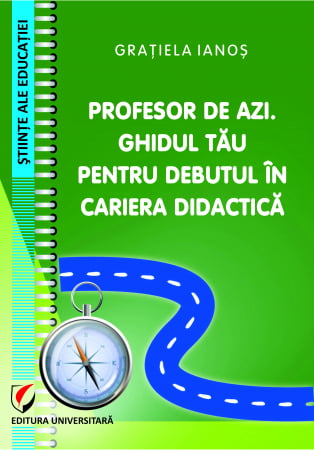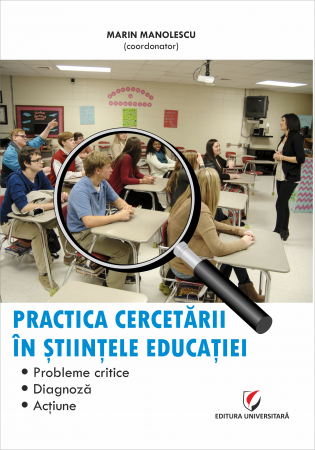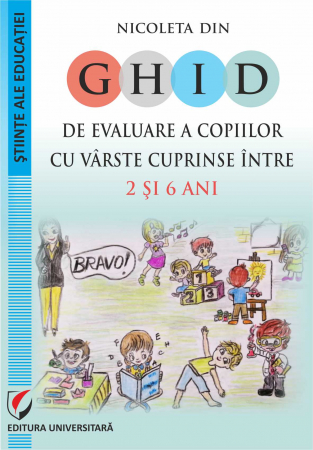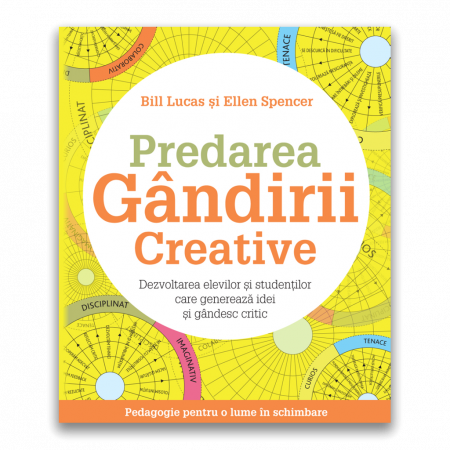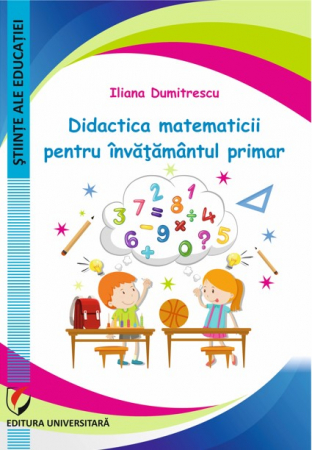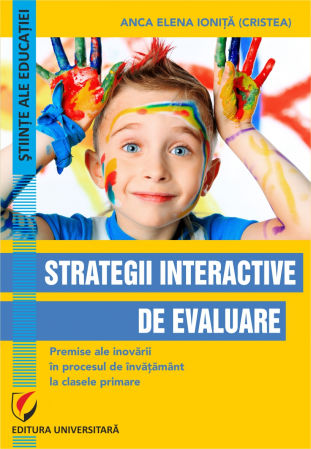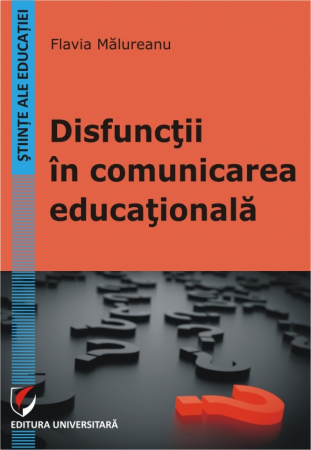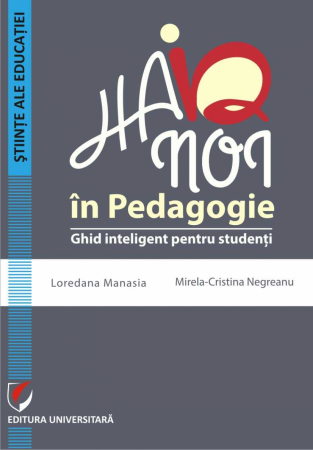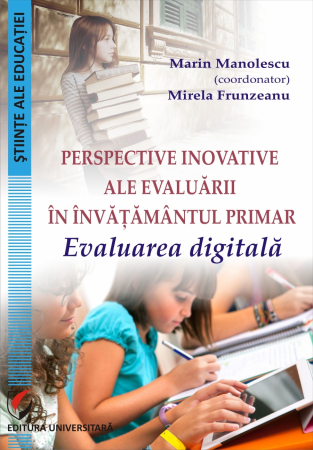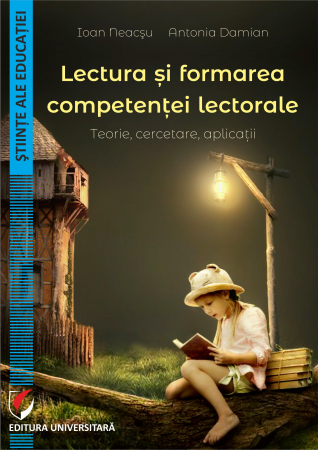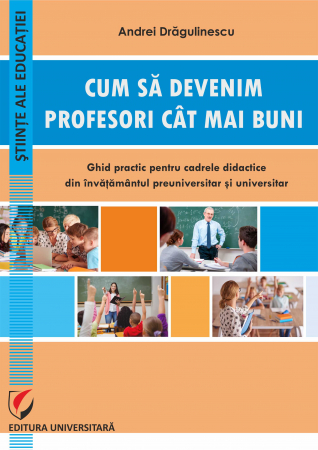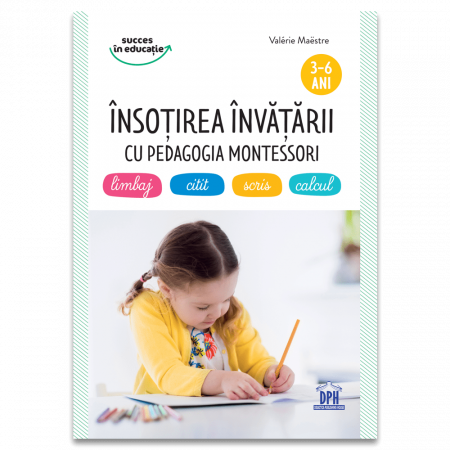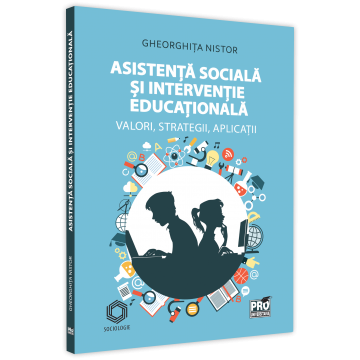Publisher: Editura Universitara
Author: Ruxandra Folostina, Elena Simion
ISBN: 978-606-28-1206-5
DOI: https://doi.org/10.5682/9786062812065
Publisher year: 2020
Edition: I
Pages: 192
- Description
- Download (1)
- Authors
- Content
- More details
- Where to find it
- Reviews (0)
The skills that students acquire in school must allow them to be anchored in the real world. Education systems are facing, worldwide, the rapid development of the information society, where the skills and skills of manipulating information are absolutely necessary to survive. Economic and industrial competition creates and deepens the contradiction between the assimilation possibilities available to the student, on the one hand, and the requirements imposed by contemporary life and the current structure of the school, on the other hand, demanding the raising of all social categories.
Internationally, many countries now say that digitizing the education system is a major goal. A major impact of this decision can be seen in the process of curriculum design and development. The book aims to respond to the current needs generated by the implementation of a curriculum based on digital technology, participating in the compatibility of teaching practice with this new orientation.
-
Digital Learning in Children with Educational Support Needs
Download
RUXANDRA FOLOSTINA is a teacher at the Department of Special Psychopedagogy at the University of Bucharest, where she teaches Didactics and Methodology of Special and Integrated Education, Methodology for educating and training students with intellectual disabilities, Diagnosis and intervention in learning disorders. In 2011, she was awarded the "Henry Stahl" Prize for Economic, Legal, Sociological Sciences for her contribution to the volume Treatise on Special Psychopedagogy (coord. Emil Verza, Florin Verza, 2011). She is a member of the Universal Journal of Educational Research (USA) and a reviewer for several international journals and conferences. Among the published volumes, we mention: Mechanisms of learning for the student with intellectual disability (University of Bucharest Publishing House, 2014), Positive approach. A condition of school inclusion (in collaboration, University of Bucharest Publishing House, 2017), History of special education development (in collaboration, University Publishing House, Bucharest, 2017), Positive psychology and education of children with special educational needs (in collaboration, University Publishing House, Bucharest , 2018).
ELENA SIMION is a doctor in the field of Education Sciences, with an experience of over 10 years in the field of special education. She is a specialist psychologist with competence in special psychopedagogy and the author of studies dedicated to the use of information and communication technology in children with special learning needs: Integrated learning systems and their effects on attention of children with intellectual disability (2013) and The impact of ICT on the visuomotor precision of students with intellectual disability (2013).
List of abbreviations in the text / 9
Introduction / 11
I. Use of information and communication technologies (ICT) in education. Current research / 14
I.1. Brief history of the development of information and communication technologies / 14
I.2. Educational e-learning platforms / 16
I.2.1. The essential elements of an e-learning course / 19
I.3. Podcasts / 21
I.4. Educational hubs / 22
I.5. Assistive technologies. Equal opportunities / 24
I.6. Individual diversity and the evolution of information and communication technology / 26
I.7. The potential of information and communication technologies from an educational perspective / 29
I.8. Current research on information and communication technology in the service of special education / 31
I.8.1. The educational potential of information and communication technologies for students with special educational needs / 32
I.8.2. The educational effectiveness of ICT in the case of students with special educational needs / 42
I.8.3. Integration in lesson of information and communication technologies; research trends and development concepts / 44
II. Theoretical foundations of the use of information and communication technologies in special education. Relevant concepts and theories / 54
II.1. Theories of learning and integration of information and communication technologies in lesson / 54
II.1.1. Fundamental theories of learning / 54
II.1.1.1. Behaviorism / 55
II.1.1.2. Cognitivism / 57
II.1.1.3. Constructivism / 59
II.1.2. The relevance of theory for educational technology / 60
II.1.2.1. Integration of information and communication technologies in the specifics of each learning paradigm / 62
II.1.2.2. Instructive scaffolding learning and the use of information and communication technologies / 68
II.1.3. Learning in the context of the information society / 70
II.1.4. Information and communication technologies and the transformation of the learning process. Influence on the curriculum / 73
II.2. Instructional design. Implementation of educational content with ICT support / 75
II.2.1. Defining operational objectives / 76
II.2.2. Pedagogical strategy in the context of special educational requirements / 78
II.2.3. Defining the interaction characteristics / 81
III. Facilitating learning progress through the use of information and communication technologies in lesson / 84
III.1. Integration of information and communication technologies in the learning process - generic model / 84
III.1.1. Main components of the generic model / 85
III.1.2. Interactive design / 88
III.1.3. The educational utility of a system based on information and communication technologies / 90
III.2. Multimedia and active learning / 91
III.2.1. The biological bases of the learning process / 92
III.2.2. Learning through multimedia means / 94
III.2.3. Multimedia and the theory of multiple intelligences / 95
III.2.4. Active learning / 100
III.3. Facilitating learning progress / 105
III.3.1. Technology - intellectual partner in the Learning process / 106
III.3.2. Technology and learning stimulation / 107
III.3.3. Technology and thought stimulation / 109
III.3.4. Technology and independence of the learning process / 111
III.4. The role of ICT in achieving, facilitating and streamlining educational activities in special and inclusive education / 116
III.4.1. The use of ICT in promoting transdisciplinarity / 117
III.4.2. ICT and stimulating active learning / 118
III.4.3. The role of ICT in the collaborative construction of scientific knowledge / 118
III.4.4. Collaborative knowledge construction through PBL (problem based learning) / 120
III.4.5. Project based learning / 121
III.4.6. Using ICT and facilitating learning in an interactive context / 121
III.4.7. Use of ICT in providing support to students with CES / 121
III.4.8. Use of ICT and facilitating access to scientific knowledge / 122
III.4.9. The use of ICT and the promotion of efficient cognitive assimilation / 123
III.4.10. Use of ICT and stimulation of computational thinking / computing / 124
IV. Designing didactic conditions for the efficient use of educational software / 125
IV.1. Context - The need to study the role of information and communication technologies in special education and the integration of educational software in the interactive lesson / 125
IV.2. How to organize and structure the eContent AeL / 128
IV.2.1. Initializing the topic of the interactive lesson / 130
IV.2.2. Instructional design (pedagogical design) / 131
IV.2.3. Target population analysis 132
IV.3. Description of multimedia resources / 132
IV.4. Visual design and ergonomics of the interactive application / 143
IV.4.1. Visual organization - design principles / 144
IV.4.2. E-reading / 145
IV.4.3. Using colors / 146
IV.4.4. Structure / visual design / 147
IV.5. Characteristics and psycho-pedagogical requirements of an educational software adapted to students with learning support needs / 148
IV.6. Technical characteristics of educational software / 154
IV.7. Description of an interactive lesson / 155
V. Online and mobile applications for knowledge and speech development / 158
V.1. Speech therapy software / 159
V.2. Speech therapy platforms / 163
V.3. Mobile applications for language and neurodevelopmental disorders / 165
V.3.1. Mobile applications used in language disorders / 167
V.3.1.1. Breathing practice - applications for the Romanian language / 167
V.3.1.2. Pronunciation practice - applications for the Romanian language / 168
V.3.1.3. Stuttering therapy - applications for the Romanian language / 169
V.3.1.4. Applications for writing and reading in Romanian / 170
V.3.1.5. Applications to stimulate speech development / 171
V.3.1.6. Useful applications for children with autism / 172
V.3.1.7. Useful applications for speech apraxia in children / 174
V.3.1.8. Useful applications for dysphagia / 174
V.3.1.9. Useful applications for phonological awareness / 175
V.3.1.10. Useful applications for stimulating cognitive development / 176
VI. Limits of digital learning / 178
VI.1. Improving proposals from the psycho-pedagogical perspective for the integration of information and communication technology in the lesson / 179
BIBLIOGRAPHY / 182
It is already well-known that technology is advancing at a rapid and continuous pace, with science driving and contributing significantly to its development. New occupations appear every day. Education assumes the role of preparing students for challenges that, from a professional perspective, may not have been launched yet. Thus, the competence to learn is a major responsibility of the contemporary school. In order to develop personalities capable of responding to the needs of the information society, students' acquisitions must be adaptable to dynamic social and professional needs and contexts.
The skills that students acquire in school must allow them to be anchored in the real world. Education systems are facing, worldwide, the rapid development of the information society, where the skills and skills of manipulating information are absolutely necessary to survive. Economic and industrial competition creates and deepens the contradiction between the assimilation possibilities available to the student, on the one hand, and the requirements imposed by contemporary life and the current structure of the school, on the other hand, demanding the raising of all social categories.
Internationally, many countries now state that the integration of information and communication technologies (ICT) into their education system is a major goal. A major impact of this decision can be seen in the process of curriculum design and development. This document aims to respond to the current needs generated by the implementation of a curriculum based on information and communication technologies, participating in the compatibility of teaching practice with this new orientation.
The essence of this curriculum, based on the integration of information and communication technologies in current training approaches, consists in reconsidering the way in which learning occurs and the role of the two major educational actors: the teacher and the student. In this new context, this paper aims to provide a theoretical and structural perspective on the ICT curriculum, as well as on the role and weight of various components of the curricular system in designing the learning offer based on the integration of information and communication technologies. training and evaluation.
Thus, the major epistemological paradigms with substantiation role will be approached, a series of theories associated with them, but also elements that guide the curriculum design process: principles and criteria with projective role.
ICT has become an important engine of daily life and economic activity. The vast majority of people today use the computer for a variety of purposes; For the younger generation in particular, using a computer is a normal, everyday activity. The integration of computers in the field of education reflects these trends.
Successful use of computers in educational contexts depends not only on their availability, but also on the familiarity of users with them. This also applies to internet access.
The expectations and demands of society in general and of the professional environment in particular are going through a moment of fundamental change. "The 21st century has already brought historical changes to the professional environment. The era of knowledge required a continuous flow of well-trained employees, employees who use brain power and digital tools to implement, in their daily work, well-polished skills. Today, professional environments are increasingly based on collaborative teamwork, whose members are often in different locations and need to use a zoo of tools and services to coordinate their projects. " (Trilling and Fadel 2009).
These changes can also be seen in social perceptions of what the skills of the 21st century mean, cultural and ethnic identity, but also literacy, whose core component is digital literacy.
These major changes, which take place at the social level, are undoubtedly reflected in the level of formal education. Different forms of information and communication technologies (ICT) are discussed, analyzed, discussed or simply observed. In the context of implementing a curriculum based on information and communication technologies in special education, the role of ICT is to be a tool to produce learning, to support authentic individual communication and expression, beneficially integrated in the educational process of students. ICT is not a tool of the school space, but can be integrated into the student's personal curriculum.
Each of the levels of the education system, from preschool to university or even lifelong learning, is subject to the impact of the transformations described above. As recent research (Heckman 2010) proves, the preschool and pre-university level are the stages with the greatest impact in terms of acquisitions influenced by the use of information and communication technologies, and that middle and high school students will support collaboration, critical thinking and complex logical-deductive reasoning. "The first years of a child's development are the most sensitive stage in terms of cognitive acquisitions, while adolescence is the best time for non-cognitive acquisitions. Remedial interventions can be costly and often ineffective ”(Heckman 2010).
Customer Support Monday - Friday, between 8.00 - 16.00
0745 200 718 0745 200 357 comenzi@editurauniversitara.ro
6359.png)
![Digital Learning in Children with Educational Support Needs [1] Digital Learning in Children with Educational Support Needs [1]](https://gomagcdn.ro/domains/editurauniversitara.ro/files/product/large/folostina_invatare-digi-la-copii-cu-nevoi-educationale_bt-3044-7842.jpg)
